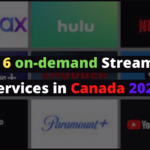Content Marketing Mistakes You Keep On Committing
Regular status updates on Facebook and filtered photos on Instagram are not the entirety of a content marketing strategy. Business partners Lucas and Andrew learned the tedious way. The duo opened co-working rental spaces in the outskirts of the central business district as the population of mobile workers continue to expand. The shared workspace includes access to a business center, complete with fast Internet connection, fax machines and telephone lines; a fully-equipped kitchenette with free drinking water, coffee and snacks; and a lounge area with foosball, board games and other recreational features. Lucas and Andrew want to spread the word about their services via the platform used by their target market: social media. The problem is, they’re not getting the response they expected from existing social sites.
Content is one of the major signals Google use in ranking webpages. But what type of content should you be producing to earn a dedicated readership and bring revenues to your business? Let us break down Lucas and Andrew’s content marketing tactics and identify where they could have done better.
#1: Content quality
Photo courtesy of COOBY COOBY via Pexels
Business partners Lucas and Andrew knows that they should maintain visibility in the net, where their target remote workers are ever present. In an effort to stay “active”, they paid little attention to the quality of materials they post online. Their business page appeared to be managed by a lazy high school student who spins articles online. They failed to bring anything new to the table; worse, their unoriginality was too obvious. Google defines low quality content as one “created without adequate time, effort, expertise, or talent/skill.”
To create quality content, understand three important elements: your target audience, your purpose, and the type of message you want to share. Lucas and Andrew’s co-working space aims to attract the attention of remote workers. Their initial goal is to get their business known and eventually to turn their readership into paying customers. Their messages are primarily related to the changing culture of working and the benefits of co-working communities. With these elements in mind, they have guidelines in producing high quality content consistent with their business goals.
#2: Content amount
Photo courtesy of Kaboompics via Pexels
“An unsatisfying amount of MC (main content) is a sufficient reason to give a page a low quality rating,” Google notes. A satisfying amount of content depends on the purpose of the page. If your blog aims to educate on the rights and duties of a freelance worker, a few paragraphs will not be enough. There is no fixed rules on the number of words your articles should have, but to give you a helpful idea, you can assess content using your keywords that rank well on search engines.
#3: Strategic keywords
Photo courtesy of rawpixel.com via Pexels
Keywords play an important role in developing effective content marketing tactics. It is not enough to create unique and compelling content. You need to use the right keywords and strategically place them in your article or image/video description. Keyword prominence, a Google ranking factor, requires that a keyword should appear in the first 100 words or first paragraph of a content. Avoid stuffing your content with repetitive keywords. “Keyword stuffing” involve the use of keywords over and over again to lure search engines and users. This can lead to a very low quality rating.
#4: Great images
Photo courtesy of fancycrave via Pexels
Humans are visual people. We tend to stay on a page with appealing photos. Visual assets are excellent tools to create traffic to a page. According to Google, a good-quality image is one that is crisp and sharp and preferably customized to your business. It must be related to the content. If the image is the content itself, it must deliver the right message you intend to deliver.
Some of the tips to propel your content with an image include the use of supported image types (BMP, GIF, JPEG, PNG, WebP and SVG). Place the photo near the relevant text and provide informative titles and captions. When publishing an image, provide informative filenames to give Google clues about its subject matter and to help the search engine locate the image if there no suitable text on the page. Google can use the descriptive filename as the image’s snippet in the search results.
#5: Compelling videos
Photo courtesy of Teono123 No via Pexels
With the massive amount of content on the Web, the competition is in creating not only quality materials but those that can stand out. Nothing grabs a user’s attention as effectively as a compelling video. Videos are more consumable than 1,000-word articles. Instead of writing about the features of their co-working spaces, Lucas and his partner can produce a 2-minute video similar with the virtual tours real estate developers use. They can add a bit of humor, which people just love.
Google offers video publishing tips such as marking up the videos for schema.org to allow search engines to index them. It is also advisable to submit a video sitemap to Google to allow it to know all the content on your website. Use a widely-supported video format to make it accessible to more users and easier for Google to index.
#: User-generated content
Photo courtesy of Tookapic via Pexels
User-generated content (UGC) can bring a business the exposure it needs without breaking the bank. How? You can run a contest on social media that invites people to submit UGC for a prize or incentive. There’s a long list of successful UGC campaigns in the past, but one stands out: the ALS Ice Bucket Challenge. Between July and August 2014, people were dumping a bucket of ice and water over their heads, or another person’s, to bring awareness to amyotrophic lateral sclerosis (ALS), a motor neurone disease. The participants filmed the challenge and nominated others to do the same. A nominee had 24 hours to comply or donate to support ALS research. The campaign immediately went viral on social media and generated more than 1.2 million videos on Facebook and more than US$100 million in donations.
You can come up with a UGC campaign to promote a product or service, and get people to talk about your brand.
Content is an integral part of digital marketing. It’s not simply about writing a business offering or posting a nice stock photo. Content marketing services involve a set of well-researched and tested techniques aligned with one’s business goals. Aside from keeping up with Google’s changing ranking guidelines, you should be updated with trends and consumer behaviors that define what a quality content is.





















